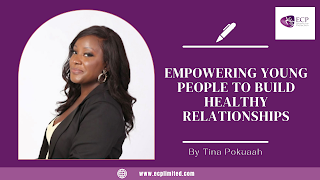Self Esteem - By Tina Pokuaah
.png)
Self esteem “It’s hard to improve your self-esteem, when you have so many people to compare yourself too”. The theme of this month’s blog is self-esteem, having delivered a session with a group of girls recently and hearing them express their honest feelings. It really hit home, and highlighted why it’s important for both parents/carers and professionals to empower young people to develop their self-esteem. So, what is self-esteem you may ask? Well, it describes how one feels about themselves internally; it looks at one’s self-worth, self-value, etc. It is often one of those words that gets thrown around a lot, making it seem like it is something you can easily just pick up off a shelf. The reality is however, that it takes intentionality and full responsibility to cultivate in one’s life. In the UK, studies show 61% of 10 to 17-year-old girls have low self-esteem, while 7 in 10 girls believe that t






